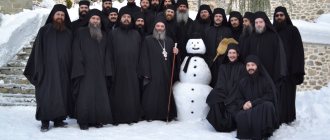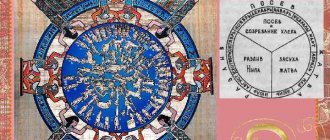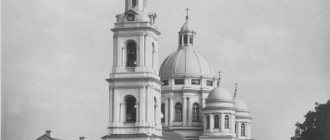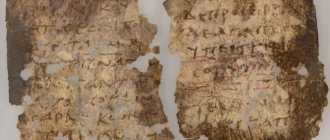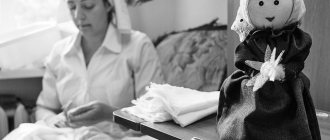Yaroslavl region. 180 kilometers from Moscow. There is a unique place here - the Nikolo-Solbinsky Convent. There are ten temples on its territory. This is one of the largest convents in Russia. Real life is in full swing behind its walls. After all, children live here. “We actually came to the temple with other goals, but it turns out that we need to correct the mistakes of society. We organized a shelter. It all started with two or three children. No one was looking for them on purpose, it was just that relatives of disadvantaged parents brought them to us,” nun Eupraxia tells a MIR 24 correspondent. Just 20 years ago there was nothing on the site of the monastery. Abbess Erotiida was blessed to restore, or rather, re-build the Nikolo-Solbinsky Monastery. Almost immediately when she arrived, it was decided to set a course for social assistance to local residents. Today, on the territory of the monastery there is a shelter for orphans, a kindergarten, a nursery, a secondary school and a vocational college.
At first, the school was mainly attended by children from disadvantaged families. Later, parents began to contact the monastery, wanting their children to be raised at the monastery in the spirit of the Orthodox faith and virtues.
“Children came to us who had seen a lot, so first of all it was necessary to surround them with care. People also come to us from ordinary full-fledged families. Nowadays it’s very difficult to keep children from evil,” says Sister Eupraxia.
Ceramic workshop invites artists and sculptors
The Nikolo-Solbinsky Monastery has its own ceramic workshop. Here they produce dishes, souvenirs, and figurines using slip casting technology. This technology originated in the 18th century in Europe, and then came to Russia. The ceramic workshop consists of three workshops. In order to make one product, you need at least two weeks and five workers. “To make a cup, the artist draws a sketch on paper, then grinds a complete blank from plaster on a special machine, from which he removes the plaster mold. Liquid clay is poured into it and remains there until the gypsum absorbs it. Each cast product is prefabricated. We don’t glue, but rather attach, so if you deform the shape even a little, for example, when attaching a handle, the clay will remember these deformations and, after firing in the oven, will bend again,” says nun Tamara. After the products have been poured and they have dried, the setting process begins. If the framer removes the seams unevenly or smudges the edges, the product will remain deformed. When the mandrel is finished, the product is placed in a drying cabinet.“When the product is washed and set, it goes to the kiln, where the first firing is done. Then the product is covered with white enamel,” explains the sister.
The defect rate with this technology is very low. Yes, and it occurs most often due to the human factor or technical failure, but the latter is extremely rare. If you fill the product carelessly, carelessly, cracks will form. If you prepare the stove incorrectly, the product may stick or stick together. For the abbess of the monastery, the key task was to create her own style. That is why all products are made in red-brown tones with a pattern. The sketches are developed by the creative team. The monastery is constantly in need of artists and sculptors with education. Not only nuns, but also ordinary specialists work in the ceramic workshop.
“Of course, lay people also work for us. We teach ourselves how to draw. But I won’t hide that we are very interested in artists and sculptors. If you want to work with us, you can simply contact the monastery or specifically the ceramic workshop. We have very good conditions, and the very specifics of work in the monastery are very different from production,” explains Sister Tamara.
According to the nuns themselves, at first no one took them seriously. Ceramic art, like any other, needs to be studied in a specialized institution - this is what the majority thinks. “We once went to production and they told us: “Yes, you can, because you have to learn this.” But we can do it, it’s just that different laws apply here. People need to make this clear. The monastics have a different task. A German once came to us and said: “Who gave you the initial capital?” I said that no one gave it to us. That is, the way of thinking is already such that a person cannot do anything without initial capital,” said Sister Tamara. It turned out that the monastery lives entirely on donations. “Often, out of obedience, you have to do work that you have never encountered before. But we pray and ask the Lord for admonition. And the Lord helps,” adds mother Eupraxia. Ceramic production has existed in the Nikolo-Solbinsky Monastery since 2011, but only in 2015 did it develop its own style. Most recently, the monastery took part in the Russian ceramics festival with its products and took first place there.
Let's sum it up
If you want to devote yourself to the service of God by taking monastic vows, you should be well aware that becoming a true monk is a very difficult matter. To do this you need:
- renounce worldly life;
- leave your home and loved ones;
- follow church rules;
- regularly sincerely prays to Christ;
- obey your spiritual guide;
- an unshakable desire to become a monk.
When using materials from thebestvideo.ru, a link to the source is required.
“Good school on Solbe”: children should have inner freedom
With the appearance of an orphanage in the monastery, the need arose to educate children on site, since the monastery is located in the forest, far from cities and villages. At first, the children studied externally or at home at the Pereslavl school. In 2013, the school received a license and state accreditation, so now the students receive state-issued certificates of the “Good School on Solba”. Now more than a hundred people are being educated and studied in the orphanage. “The biggest need now is a building for a new school. There are a lot of people who want to study with us, but we cannot accept everyone. Our school operates on the basis of additional music education. Creativity helps to liberate children. If a child is closed, if he is afraid of something, then he closes down and does not even remember basic things. There must be inner freedom,” says the head teacher of the school, nun Paisia. Music at school is not the only creative direction. Girls learn to draw, embroider, and act in the theater. All this happens on a professional level with teachers, stage managers, artists, and directors.
“Sometimes they make concessions for children: “These are children, we can do it somehow.” But we have a slightly different approach - so that everything is beautiful and perfect, even at a child’s level. Children learn this so much that they cannot then do the work “somehow,” notes mother Paisiya.
Disciplining girls from difficult families is not so easy. A clear daily routine, which is followed here, helps.
The monastery invites teachers to work in: chemistry, biology, piano, theoretical musical disciplines, violin, solfeggio, and handicrafts. Today there are 20 teachers working at the school, children study in small classes of six, but more teachers are still needed.
“We also hire young teachers who have recently completed their studies. The main thing is that a person has a desire to help children who find themselves in difficult life situations. If this desire is not there, it is very difficult to work. Children should not be forced to study, they should be interested,” says the sister.
After school, most everyone continues their education: some stay in college at the monastery, others go to other educational institutions. By the way, graduates of regular schools can also enroll in a local college and master a profession. One of the common misconceptions is that people go to the monastery to abstract themselves from society and “worldly work.” But this is not so, assures Mother Eupraxia. Prayer and work are the basis of life for monks.
“The monks always did handicrafts, they fed themselves on this. Work helped them pray. This is a help, the basis of life for monks,” she adds.
Foundations of the monastic lifestyle
It is necessary to say a few words about the reasons for the emergence of monasticism in the Orthodox Church. It is known from church history that monasticism as an institution did not arise immediately after the Savior’s sermon, although it is recognized as indisputable that the institution of virgins, which preceded monasticism, arose simultaneously with the Church itself[6]. It was in the mouth of the Divine Teacher that words sounded that predicted the phenomenon in the Church that was to appear in the future: “For there are eunuchs who were born like this from their mother’s womb; and there are eunuchs who are castrated from people; and there are eunuchs who made themselves eunuchs for the Kingdom of Heaven. Whoever can contain it, let him contain it” (Matthew 19:12). Of the three types of eunuchs (people deprived of the ability to bear children) listed by the Savior, the last, in the opinion of the holy fathers, indicates monasticism. Thus, monasticism is that type of people who take upon themselves voluntary virginity (abstinence from marital cohabitation) for the sake of acquiring the Kingdom of Heaven.
Metropolitan Philaret of Moscow in “Rules for the improvement of monastic brotherhoods of Moscow stauropegial monasteries” points to the Holy Scripture as the only and absolute basis for monastic vows:
1. one who takes a vow of obedience and renunciation of his own will and his own wisdom must base it on the word of the Lord: “Then Jesus said to His disciples: If anyone wants to come after Me, let him deny himself, and take up his cross, and follow Me” (Matthew 26:24);
2. one who takes a vow of chastity must heed the word of Christ: “He who is able to contain, let him contain” (Matthew 19: 12.) - and the word of the Apostle: “He who is not married cares for the Lord, how he may please the Lord.” (1 Cor. 7:32);
3. The one who takes a vow of non-covetousness must be confirmed in the word of Christ: “Jesus said to him: if you want to be perfect, go, sell what you have and give it to the poor; and you will have treasure in heaven; and come and follow Me” (Matthew 19:21)[7].
Saint Philaret was not the first to claim that this way of life is based on Holy Scripture. For example, St. Basil the Great, when he was looking for a model of perfect gospel life, he concluded that it was actually monastic life[8]. Saint Ignatius of Caucasus made the same conclusions: “The fulfillment of the Gospel commandments has always been and is now the essence of monastic work and residence”; “true Christianity and true monasticism lies in the fulfillment of the Gospel commandments. Where this fulfillment does not exist, there is neither Christianity nor monasticism, whatever the appearance.”[9]. And here are the words of St. Macarius of Optina: “What does monasticism mean? The fulfillment of Christianity consists in fulfilling the commandments of God, and in them lies the love of God: if anyone loves Me, he will keep My word (John 14:23), said the Lord.”[10]. Or here is the opinion of the rector of the Athonite monastery of Simonopetra, Archimandrite Emilian, our contemporary: “The monastic community is the most vivid embodiment of evangelical perfection, achieved through renunciation of everything, daily erection of one’s cross and following the Lord. First of all, such a community is a search for the Kingdom of God, and everything else will be added from God”[11].
The Tradition of the Orthodox Church includes the holy Forerunner of the Lord John, the holy prophet of God Elijah, the holy apostle and evangelist John the Theologian, and the Most Pure Virgin Mother of God among the founders of monasticism. For Christians they have been and will be examples of complete dedication to God.
But as a mass phenomenon, with its own rules, orders and a very special philosophy of life, monasticism appeared at the end of the 3rd - beginning of the 4th centuries[12]. Until this time, the Church knew only isolated cases of asceticism, when, out of a desire for perfection, some Christians took vows of virginity or voluntary poverty, and some devoted their lives to unceasing prayer or all kinds of abstinence[13]. Such ascetics were called ascetics[14]. Over time, such ascetics became more and more numerous, but they were still quite scattered, but they spent their lives among fellow believers and did not form separate communities, did not go into the desert
Temples, shrines, miracles
20 years ago, on the territory of the Nikolo-Solbinsky Monastery there was only one destroyed Assumption Church, now there are 10 of them. Temples were built only with donations. “The temple was completely destroyed, we don’t know what it looked like before. There is a legend that the monastery arose on the site of the miraculous appearance of the icon of St. Nicholas. Before the revolution, there was an old miraculous icon in the monastery, but it was not preserved. When the monastery was revived, the revered icon of St. Nicholas was presented to the newly opened monastery by a Moscow priest. In the Trinity-Sergius Lavra, a particle of relics was inserted into it. Now this is our main shrine,” said Mother Eupraxia.
Another significant icon that is kept in the Assumption Church is the Trinity, painted by the monks on Mount Athos.
“We have pieces of the relics of the saints - the patrons of our monastery. There is a shoe of St. Spyridon, whose relics are located on the island of Corfu in Greece. This is a very famous saint, he is loved and revered in Russia, but we have very few churches in honor of him,” adds Sister Eupraxia.
In honor of St. Spyridon, a temple was also built on the territory of the monastery. Currently, renovations are still underway here, help is still needed, but the main work has already been completed. It took a long time to build the temple - the abbess wanted to recreate the style of stone carving. Its main difference is that each stone has its own sketch, and together they form an artistic composition.
“Our mother is a person who appreciates art, culture, everything beautiful. She wanted to recreate the style of the past. It was difficult to find specialists, and building a temple was time-consuming and expensive. Each brick has its own drawing. “Vladyka gave his blessing to prepare the temple for consecration next year, and there is still so much that needs to be done: paint icons for the iconostasis, purchase the necessary utensils, finish painting, cast and hang bells, complete the external design of the temple,” the nun shares.
Most often, the church of this saint is visited to ask for the most important things. Pilgrims put notes with personal requests into a special box; many return after some time to thank St. Spyridon and pray for the miracle that has happened. The temple even keeps a book in which visitors write their thanks.
Another unique temple in its architecture was built in honor of St. Sergius of Radonezh. “Here we most often baptize children and conduct services. He is very homey. All our churches are different, but each has its own flavor,” explains Sister Eupraxia.
Another rare temple for Russia that was built here was erected in honor of the Blessed Xenia. This saint has an amazing story. When she was a young girl, her husband suddenly died. Ksenia was so upset by the fact that he died without repentance and communion that she accepted the feat of foolishness in order to save the soul of her husband.
In the building with the Church of the Blessed Xenia there is a nursery for the little ones. Here they take care of children abandoned by their parents. According to the nun, it is easier to raise such children because they did not have time to receive a negative bookmark. By the way, children who have never seen their mothers call nuns mothers, the rest remember their parents, no matter what they were.
“Even if they are drug addicts or alcoholics, children still remember them. It's good when they remember their parents. We do not specifically persuade anyone to stay in the monastery in the future and do not determine their path - as the Lord wills. Some will stay in the monastery, while others will start a family,” said the sister.
The monastery not only engages in social work, but also produces natural dairy products and cheese. In the near future, there are plans to open a hospital with high-quality equipment, where not only sisters, workers and children who live on the territory of the monastery, but also residents of nearby villages could be treated. Their abbess, Abbess Erotiida, is especially sorry - there are no hospitals nearby.
Life of monks
The above describes who the monks are. What kind of life do people lead who have followed their calling and dedicated themselves to God? To be tonsured does not mean that a person ends life on earth. It continues to satisfy the need for sleep and food. Of course, each monk has his own duties, working for the benefit of people or the monastery, which is called obedience.
Obedience is the work that the inhabitants of the monastery do when they are free from worship. It is divided into economic and educational. By economic work we mean that which is aimed at maintaining order in the monastery. What kind of work the monk does is decided by the abbot. Educational work is prayers.
Every minute of such a person is devoted to the service of God. He is not bothered by earthly goals and ideals. The monk’s day is spent in prayers, which become for him a kind of meaning of life.
Heart-to-heart conversation with the abbess of the Nikolo-Solbinsky Monastery, Hegumenia Erotiida
Mother Erotiida received the assignment to restore the monastery when she was only 33 years old. There was absolutely nothing on the territory of the modern church complex at that time. There was devastation all around, and homeless people lived where the monastic cells stand today. “I realized that the main thing here is not to raise the monastery, but to encourage people, to show concern for them. I saw the state of medicine, education, people without jobs and housing, I felt very sorry for them. For the first ten years I hardly slept, I had a lot of energy. First we established monastic rules, then we began to organize holidays for people, fed them, made gifts with our own hands, and invited them to pray. Then the children appeared, at first they were brought for the holidays, and then they began to stay there permanently,” said Abbess Erotiida. Social work with children was not chosen by chance. First, the Mother Superior began to help the adults, giving them work and shelter. But all this did not lead to the desired goal.
“When we started meeting people in the area, the first thing I wanted to do was give them jobs. We took a local ruined collective farm, where they slaughtered cows for a bottle, got drunk, and went on rampages. When I saw all this, I didn’t know what to grab onto in order to stabilize people and orient them toward hope. We renovated this collective farm, the farm, paid all the debts for them, paid off the loan for several years, and developed the farm.
But I became even sadder when I saw that people had forgotten how to work and wanted to get everything for nothing, steal, and use foul language. I talked with the locals many times, tried to call for goodness, to inspire, but it had no effect,” recalls Mother Abbess.
Reality provided the answer to the question of what a modern monastery should be like. To retire and live a quiet monastic life, ignoring what is happening, would not be Christian, the abbess explained. “I noticed that people are very divided, selfish, they are divided even within the family. After talking with people, I realized that people split even within themselves. Our monastery became one of the first to take a course towards social missionary service. Therefore, when I saw that it was very difficult to call adults to conscience and return them to the right direction, I realized that in order to change society, we must start with raising children. Unfortunately, all that can be done for the adult generation is to make sure that they meet old age with dignity,” explained Mother.
The biggest problem of the monastery is that children occupy more than half of the territory, that is, they displace the sisters. It would be more correct to build a large school, but outside the monastery itself. There is land, but no money to sell it.
“Children occupy more than half of the monastery, one might say they are crowding out the sisters. This is all good for the children, but not so much for the sisters. As a result, harmony is disrupted. And children want to run and jump - this is their childhood and their right, we cannot deprive them of this. We want to build a school, but there is no money for it. We applied for help at the state level, but we were denied funds and were told that the schools in the districts were not full,” she shared.
Among other things, Mother Erotiida supports science and art. “We have a scientific and historical department, which I have supported since the founding of the monastery. I paid scientists, and they looked for materials in all the archives of the country about our monastery. We want to supply only modern equipment in the medical center, and doctors should only be highly qualified. And I have been partial to art since childhood. The Gospel says that talents must be developed. Some have one, some have five, and some have ten. We all must develop what the Lord has given. Every person has goodness, has his own talent, his own individuality and beauty,” the abbess emphasizes.
What to do if there are no parents left in the world?
Most parents in Rus' and in other Christian countries welcomed their children’s desire to go to a monastery. Such children were equated with prayer books for the benefit of the whole family.
There are people who are strongly opposed to their offspring entering a monastery. They wanted to see their children succeed in everyday life. Their offspring need to select precise arguments and answers to objections in order to understand the correctness of their decision.
Prudent parents should carefully examine their own child's choices. Look at the root of the issue, help and accept the choice of a loved one in this difficult endeavor.
Due to a misunderstanding of the essence of monasticism, most people consider the desire of their offspring to enter a monastery as something unnatural and wrong. They do not like that they will not have procreation, and their children will be deprived of ordinary worldly joys.
Almshouse and monastery cemetery in the Seraphim-Diveevsky Monastery
By the way, about that very external side of life in the monastery.
At the moment, by the grace of God, it is landscaped. There is a clinic with an excellent dental office (the clinic accepts both nuns and monastery workers). Your own ambulance with a paramedic on duty 24/7. A modern medical center for the monastery sisters. There is also an almshouse.
This is the Orthodox analogue (and historically the predecessor!) of the modern nursing home. There are sick and old nuns here who can no longer carry out any obedience. They are looked after by young sisters who act as nannies. They are consulted by doctors as needed, and nurses perform medical procedures.
A priest comes to them. And on Thursdays, a liturgy is served in the house church “Joy to All Who Sorrow,” which is located on the second floor of the almshouse.
The old nuns, to the best of their ability, continue to pray, read the psalter and spiritual books. And they prepare for death.
Death is treated here exactly as it should be for spiritual people - calmly. And they strive to prepare for it, to confess, to receive communion. And, as a rule, they die peacefully, having reconciled with everyone and said goodbye.
Previously, even before the revolution, the sister cemetery was located on the territory of the mill monastery, within the Kanavka fence. After the revolution, the cemetery was razed to the ground and a school was built on that site. After the revival of the monastery, the monastery did not have its own cemetery for a long time. The priests and old nuns of pre-revolutionary Diveyevo, who survived to this day, were buried behind the Trinity Cathedral, where you can still venerate their graves.
On the site of the old cemetery (after the transfer of this land to the monastery), several remains and crypts were found during restoration work. They are now registered as graves, and everyone who walks along Kanavka can see this corner of the old cemetery with a penitential wooden cross next to them.
In an ordinary cemetery, the monastery purchased part of the land for graves, since it is currently not possible to set up a separate cemetery on the territory of the monastery.
We also read how to get a job as a worker in Diveevo
Founders of Eastern and Western monasticism
The flourishing of monasticism occurred almost simultaneously in Egypt, Syria and Palestine. In all three named areas, monasticism arose independently of each other, but Egyptian monasticism is considered the most ancient[20]. The founder of Egyptian monasticism is considered to be the Monk Anthony the Great. Back in 285, he retired into the depths of the desert to Mount Colisma [21]. In Thebaid, he “founded the monastery of Pisper and a number of other monastic settlements, which continue to exist after his blessed death”[22]. Another strong center of monastic life formed in the Nitrian desert. Its true founder should be considered the Venerable Ammonius of Nitria, who came to this place around 320[23]. Not far from the Nitrian Mountain there was a desert called “Cells”, where Macarius of Alexandria (city) labored, and even further from the Nitrian Mountain there was the “Skeet” desert, founded by the Monk Macarius the Great (Egyptian) in 330. Around the same time (c. 323–324), the Monk Pachomius the Great founded the first cenobitic monastery in a place called Tavennisi[24], on the banks of the Nile River, in its middle course. In Palestine, the founders of monasticism were the Monk Chariton the Confessor, the builder of the Faran Lavra (330s), and the Monk Hilarion the Great, the builder of the Lavra at Mayum (338). In Syria - St. James of Nizibia and his disciple St. Ephraim the Syrian.
The rules of monastic life came to the West thanks to the activities of the Monk Benedict of Nursia, who founded a cenobitic monastery near Naples with a charter similar to the charter of the Monk Pachomius the Great. He adapted the rules of the Egyptian monks for Italian monasticism. Monasticism found favorable soil here and began to develop rapidly. Several more daughter monasteries branched off from the main monastery of St. Benedict[25]. The monasteries that arose in the Western provinces of the Roman Empire took as their model the statutes brought to Rome by the Venerable John Cassian, and these were the famous statutes of the Pachomian monasteries.

